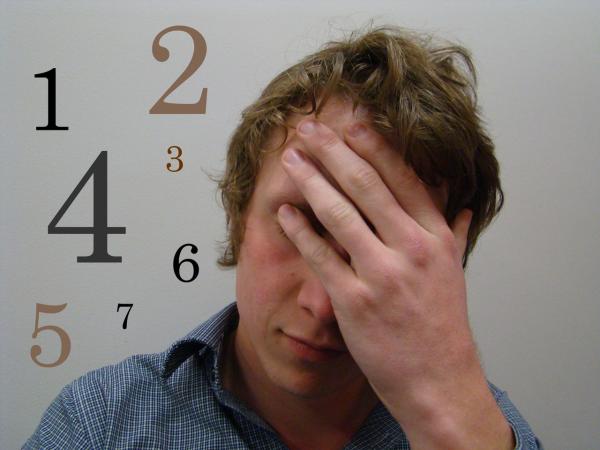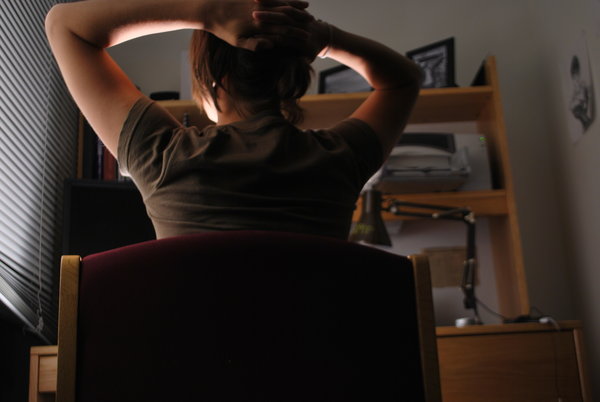
Obsessive Compulsive disorder is a psychological anxiety disorder characterized by intrusive thoughts. The person is usually recognized as anxiety provoking and irrational. To control the anxiety, the patient performs compulsive or repetitive and often ritualized behavior patterns that serves to diminish the anxiety caused by obsessions. These thoughts are often sexual, violent or religious in nature resulting in time-consuming and alienating behavior patterns such as excessive washing or cleaning, checking the doors, hoarding and walking in the patterns on the floor. The disorder is debilitating and can cause severe emotional, psychological and functional distress.
Major symptoms of the disorder include following characteristics- Obsessions or intrusive thoughts that recur and persist even after the sufferer tries to ignore them. These thoughts are generally clear and vivid, but may also be relatively vague. Although the person knows that these thoughts have no basis in reality, yet s/he is unable to abandon those thoughts. The person therefore, person some tasks frequently to seek relief from those thoughts such as counting footsteps or checking if the car is locked etc. But these compulsions don’t really provide any refugee to the person as the obsessive thoughts strike back again.
Although DSM-IV TR (Diagnostic and Statistical manual of mental disorders, revised text) does not present any particular type of OCD and only presents certain instances of the manifested disorder, yet there are several common types. Some of these are mentioned below:
1. Contamination Obsession
Herein the person is constantly irked by the thoughts of being contaminated by germs and feels threatened by diseases or illnesses attacking her/him. Therefore the individual constantly tries to stay away from those thoughts by practicing ritual behavior of washing hands excessively, bathing several times a day, washing fruits for a few minutes before eating, cleaning everything around them, dusting every other hour, taking medicines at even the slightest hint of impending illness. Although these behaviors if performed within limits are perfect, but excessive compulsion of following these behaviors and performing them recklessly is referred as contamination obsession. These people have extreme fear of being contaminated by germs or dirt or contaminating others.
2. Harm Obsession and Checking compulsion
These people excessively double check things like locks, appliances and switches. These people have an obsessive fear of causing harm to self are others and are intruded by thoughts of sexually explicit or violent thoughts and images that they consider threatening. Anything that can be vaguely associated with harm is checked and re-checked several times. You may find these persons closing all doors and windows of the house before sleeping, repeatedly checking those doors and windows throughout the night.
3. Compulsive Hoarding
These people are obsessed by the fact that something bad will happen if they throw anything away. They therefore compulsively hoard things that they don’t need to use. These people have lots of superstitions and pay excessive attention to something considered lucky or unlucky. Even if they don’t hold things and collect even useless junk, they can be seen doing other compulsive actions such as also ending the flight of staircase at a particular foot, closing or opening the doors a particular number of times before they get in as they think that its lucky such as accumulating old newspapers or empty food containers.
4. Symmetry Obsession
These people are counters and arrangers and are obsessed with order and symmetry. They have superstitions about certain numbers, colors or arrangements and want everything ‘just perfect’. There fear for order and symmetry leads them to develop repetitive actions such as counting, tapping, repeating certain words or doing senseless things, keeping everything in too orderly manner, making too many signs and slips for managed things.
5. Pure Obsession
In certain OCD cases, people tend to suffer only for obsessions that don’t result in any compulsive behavior. Primarily these obsessive thoughts are explicit and sexual in nature and may involve violent images like raping or being raped. These sexual tensions don’t transform into a compulsive behavior. Such type of OCD is called Pure Obsession or Pure-O. Generally people who suffer from it tend to develop severe defense mechanisms to reduce their anxiety where they may simply indulge is reverse actions to dismiss sexual thoughts.
Note: One needs to remember that just because one has obsessive thoughts or performs repetitive behavior doesn’t mean that she/he has OCD. Readers must know that OCD diagnosis involve the fact that these thoughts and behaviors cause tremendous distress to the individual and those around him. Also these symptoms must be strong enough to effect the daily functioning of an individual. Only then they would be recognized under diagnostic criteria. OCD results in dysfunction in life and relationships and can significantly affect occupational and social life. Therefore, if one has significant symptoms of the disorder, one must consult a clinical psychologist, counselor or psychiatrist for an intervention.



